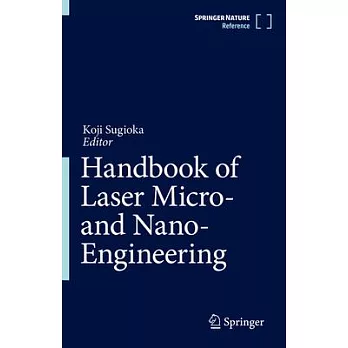Prof. Dr. Koji Sugioka (Editor in Chief)
RIKEN Center for Advanced Photonics, RIKEN-SIOM Joint Research Unit, Riken, JapanProf. Dr. Sugioka is recognized worldwide as a leading scientist in the area of laser micro and nano processing. He has made important contributions to both fundamental research on laser-matter interactions and applications in the areas of laser micro and nano processing including industrial applications. He is known for his work on laser doping, laser etching, laser surface modification, laser-induced selective metallization, microfabrication of transparent materials, VUV laser processing, laser surface nanostructuring, 3D micro and nano fabrication by ultrafast laser, and fabrication of integrated microchips for biological analysis based on laser-based technology. He is a senior research scientist at RIKEN - Advanced Science Institute and head of the Center for Advanced Photonics, as well as professor at Tokyo University of Science and Tokyo Denki University. He received B.E., M.E. and Ph.D degrees in electronics form Waseda University in 1984, 1986 and 1993, respectively. He has received nine awards for his research, inventions and contributions in the area of laser microprocessing. He published more than140 articles, gave over 90 invited talks including plenary, keynote and tutorial presentations at international conferences and has about 30 patents or pending patents related to laser engineering. He is the editor-in-chief of the journal of Laser Micro/Nanoengineering, a board member of Laser Institute of America (LIA), the Japan Laser Processing Society (JLPS) and SPIE Fellow.
Dr. Gu, Bo
President Bos Photonics, Massachusetts, USA
Dr. Gu worked for the world leading company in fibre optics as director of Asian operations from 2008 to 2012 before he formed BOS Photonics to develop photonics technologies and provide consulting services. A fellow of the Optical Society of America (OSA) and the International Society for Optics and Photonics (SPIE), he is currently on the executive committee of the Chinese Optical Society and vice president of its Laser Processing Committee.
He became OSA Fellow, for his outstanding and sustained contributions in development of lasers, laser systems and applications, in particular laser micro- and nano-machining in industrial fabrication and high-power fiber laser applications in industrial metal processing. He chaired several international conferences on Laser 3D Manufacturing and High-Power Laser Materials Processing.
Prof. Dr. Milan Brandt
RMIT University (Royal Melbourne Institute of Technology), School of Engineering, Melbourne, Australia
Prof. Dr. Brandt is director of the Royal Melbourne Institute of Technology (RMIT) in Australia. He is the leading Australian researcher in the area of macro processing with lasers and has conducted widely recognized work in laser cladding, cutting, drilling, welding, assisted machining and additive manufacturing. He initiated and chaired several international conferences and workshops and has extensive links with many international researchers and organizations. He is a board member and fellow of the Laser Institute of America and honorary fellow of the Welding Technology Institute of Australia.
After graduating from Macquarie University he joined the Department of Defence Materials Research Laboratory at Maribyrnong where he was involved in research on novel visible lasers.
In 1986 he joined the CSIRO Division of Manufacturing Technology in Sydney to conduct research on the interaction of laser radiation with materials and the application of this research to laser welding, cutting, surfacing and cladding of materials. This led to the development and commercialization of a number of new, laser-based products and processes. In 1990 he received a grant from the Division to establish the first Industrial Laser Centre in Australia to further promote laser technology to industry and develop new applications.
In 1999 he joined Swinburne University and established high power laser research activities, his research emphasis was on the development of new laser-based products and processes. In 2010 he joined RMIT as Professor of Advanced Manufacturing to focus his research activities on additive manufacturing.
Prof. Dr. Cheng, Ya
State Key Laboratory of High Field Laser Physics, Shanghai Institute of Optics and Fine Mechanics, Chinese Academy of Sciences, China
Prof. Dr. Cheng focuses in his research on ultrafast photonics and related fields, including femtosecond laser micromachining, ultrafast nonlinear optics and strong field laser physics. He is a professor of the Shanghai Institute of Optics and Fine Mechanics (SIOM), Chinese Academy of Sciences, and the deputy director of the State Key Laboratory of High Field Laser Physics in China.He received his B.S. degree from Fudan University in 1993 and Ph.D degree from SIOM in 1998. He has published more than 100 papers in peer-reviewed journals, and given more than 60 invited talks at international conferences. He is an editor of the journals of Laser Micro/Nanoengineering and Chinese Physics Letters and the Deputy Secretary General of the Chinese Optical Society.
Dr. Du, Keming
EdgeWave GmbH, Innovative Laser Solutions, Würselen, Germany
Dr. Du is General Manager of EdgeWave Laser Solutions company. The generation and amplification of laser pulses in compact diode pumped systems are a central part of his research. He spearheaded the development of new technologies for solid-state lasers and has hold records regarding the amplification of short and ultrashort pulses up to kW powers.From 1985 to 2001 he worked at the Fraunhofer Institute for Laser Technology on the development of high-power lasers. In 2001 he founded EdgeWave to offer innovative solutions in compact diode-pumped solid-state lasers for different applications.
In 2010 he and his team has received the 1st prize of the "Innovation Award Laser Technology" from Arbeitskreis Lasertechnik e.V. and the European Laser Institute.
He was awarded the Arthur L. Schawlow Award in Laser Science from the American Physical society in recognition of his outstanding contributions to the field of industrial laser technology.Currently he focuses on industrial applications of new compact systems enabling high-power ultra-short laser pulses are put to use in the industry. Especially in micro processing those lasers are suited for cutting a high number of very different materials as well as precision processing of tools.
Prof. Dr. Guo, ChunleiThe Institute of Optics, University of Rochester, USA
Prof. Dr. Guo is full professor in The Institute of Optics at University of Rochester. His research is in the area of femtosecond laser-matter interactions at high intensities
He received his Ph.D. in Physics from University of Connecticut in 1999, and was later named one of the University’s 40 Under 40 outstanding alumni. His postdoctoral training was at Los Alamos National Laboratory from 1999 to 2001, where his work was awarded the Postdoctoral Publication Prize in Experimental Sciences. He joined the faculty of University of Rochester in 2001. His research at Rochester led to the discoveries of the so-called Black and Colored Metals, which may find a broad range of technological applications and have been covered extensively by the media. He is an elected Fellow for both American Physical Society and Optical Society of America. He has authored well over 100 refereed journal articles and has been playing an active role in serving the scientific community; he is at the editorial board of the journals Light: Science & Applications (Nature), Laser in Materials Processing and Manufacturing (Springer), Optics Express and Nanoengineering and Nanomanufacturing. He had been the chair of numerous international conferences on photonics, optics and laser technology.Prof. Dr. Hong, Minghui
Dept. of Electrical & Computer Engineering, National University of Singapore, Singapore
Prof. Dr. Hong is full professor at the Department of Electrical and Computer Engineering at the National University of Singapore. He received his Ph.D. from Xiamen University in China. Between 1995 and 2010 he worked as senior scientist and manager at the Data Storage Institute (Astar) in Singapore. He had been awarded beeing fellow of the Optical Society of America (OSA), of the International Society for Optics and Photonics (SPIE) and of the International Academy of Photonics and Laser Engineering (IAPLE). He served as editorial board member of the journal "Scientific Reports" (Nature) and as editor of "Science China", he is editor of "Laser Micro/nanoengineering", at the editorial board of The Laser User (Association of Industrial Laser Users, UK) as well as guest editor of the journal Applied Physics A. He has an extensive track record in long term guest professorships, for example at the University of Science & Technology of China (USTC), at the Institute of Optoelectronics (IOE), at the Chinese Academy of Sciences (CAS), at Xiamen University, China, at Zhejiang University, China, and at Nanjing University of Technology, China. Prof. Dr. Li, LinSchool of Mechanical, Aerospace and Civil Engineering, The University of Manchester, UK
Prof. Dr. Li is a fellow of the Royal Academy of Engineering, holds a chair of laser engineering and is director of the Laser Processing Research Centre at The University of Manchester, UK. He has over 560 publications in peer reviewed journals and 47 patents related to laser processing and photonic science. He was elected to fellow of International Academy for Production Engineering (CIRP), fellow of Institute of Engineering and Technology (IET), and fellow of Laser Institute of America (LIA). He serves on the editorial boards of 11 international journals and is a director of Laser Institute of America, President of International Academy of Photonics and Laser Engineering (IAPLE), Chairman of Process and Product Innovation Group of Association of Laser Users (AILU), and a member of UK Advanced Design and Manufacturing National Technical Committee. He had been the chair of several international conferences on advanced manufacturing. He received the Arthur Charles Main Award from the Institute of Mechanical Engineers for work in laser based nuclear decommissioning technology, and received the Sir Frank Whittle Medal from the Royal Academy of Engineering for his outstanding and sustained achievements in engineering innovations in manufacturing that has led to wide commercial applications. He received Wolfson Research Merit Award from the Royal Society for his research on laser nano-fabrication and nano-imaging, and received the Researcher of the Year medal in Engineering and Physical Sciences at The University of Manchester. He obtained his BSc degree in control engineering from Dalian University of Technology in 1982 and a PhD degree in laser engineering from Imperial College, London in 1989. He worked at University of Liverpool during 1988-1994 as a postdoctoral research associate in high power laser engineering. He started his academic career at UMIST (University of Manchester Science and Technology) in 1994 and was promoted to a full professor in 2000. He set-up the first high power laser processing research laboratory and research group at UMIST and founded the Laser Processing Research Centre in 2000. He served as Director of Research and Deputy Head of School of Mechanical, Aerospace and Civil Engineering during 2009-2013, and Head of Manufacturing Research Group during 2004-2014. Prof. Dr. Lu, YongfengLaser Assisted Nano Engineering Lab, Dept of Electrical and Computer Engineering, University of Nebraska Lincoln, USA
Prof. Dr. Lu obtained his B.Eng. degree in 1984 from Tsinghua University, Beijing, China. He received his M.Eng. and Ph.D. degrees from Osaka University, Japan, in 1988 and 1991, respectively. Upon graduation from Osaka University, he joined the Department of Electrical Engineering at the National University of Singapore, where he served in various positions. He joined the Department of Electrical Engineering at the University of Nebraska-Lincoln (USA) in September 2002.
He has an extensive research background in the areas of laser-based microscale and nanoscale material processing. He has written over 220 peer-reviewed journal publications and over 160 presentations for international conferences. He has also received a number of national and international awards, including the National Technology Award (Singapore, 1998), Asean Engineering Achievement Award (Asean Engineering Association, 1999), and Laser International Award (Germany, 2000).He had been a pioneer in laser removal of nanoparticles from solid surfaces (laser cleaning) and nanoscale patterning by optical resonance in microparticles. He was among the first researchers to theoretically propose a model to explain the behaviors of nanoparticles on a solid surface under laser irradiation and to experimentally obtain subwavelength nanostructures using laser-induced optical resonance in nanospheres.
His work encompasses a few important topics - including laser writing of subwavelength structures, applications of laser removal of nanoparticles, behaviors of nanoparticles under laser irradiation, theoretical modeling, influence of laser wavelength, and particle removal with assistance of thin liquid films. He has also closely worked with industries and developed a few commercial products for laser etching, laser cleaning, laser cutting and laser surface texturing. His main areas of research and expertise are: Novel carbon materials, nanophotonics, optical spectroscopy and imaging, nanoscale laser material processing and characterization, laser-assisted nanoimprinting, 2D and 3D nanomanufacturing, surface cleaning and drying and laser-assisted materials synthesis and processing.Institute for Laser Applications, Ruhr-University Bochum, Germany
Prof. Dr. Ostendorf is head of the Institute for Laser Applications at the University of Bochum, Germany. He has published more than 360 scientific papers in peer reviewed journals and has chaired several international conferences on laser applications. He had been awarded being SPIE fellow and had been president of the Laser Institute of America (LIA). His main research focus is on microsensors and microactors, laser based metrology, laser based micro- and nanostructuring, laser ablation and ultrafast laser phenomena.Prof. Dr. Leonid V. Zhigilei
Department of Materials Science and Engineering, University of Virginia, USA
Prof. Dr. Zhigilei focuses in his research on computational materials science, development of multiple length and time-scale computational methods for materials modeling, theoretical and numerical analysis of the dynamic non-equilibrium processes in materials undergoing processing by short laser pulses, investigation of the microscopic mechanisms of phase transformations and properties of nanostructured and non-crystalline materials.
He has received his Ph.D. at Tomsk State University and St.-Petersburg State University, Russia. He had worked for laser technology companies in St. Petersburg and in Vlinius, Lithuania. He had been visiting scientist and guest professor at Pennsylvania State University, USA, at the Japan Atomic Energy Research Institute and the University of Virginia, USA.Aside to his primary research interest on laser interactions with materials, he has a strong interest in applying research outcomes to develop new technologies in microprocessing and nanofabrication, as well as in nanophotonics.
He has more than 20 years of experience in the field of laser interactions with materials and its applications, has co-authored more than 10 books and published 300+ scientific papers. He had been chair for several international conferences on functional materials, on plasmonics and nanotechnology. He is serving as the editor of Science China, the International Journal of Optomechatronics, Editor of Laser Micro/nanoengineering and Guest Editor of Applied Physics A and Industrial Laser Users. He had been awarded beeing fellow of the Optical Society of America (OSA) and fellow of the International Society for Optics and Photonics (SPIE) for his achievements and outstanding contributions to Laser Interactions.Prof. Dr. Zhong, MinLin
The Center of Laser Processing, Dept. of Mechanical Engineering, Tsinghua University, China Prof. Dr. Zhong is director of the Laser Center at Tsinghua University, School of Materials Science and Engineering, China. His research focuses on fundamental and application oriented research on laser micro-nano fabriocation, laser surface engineering, laser additive manufacturing and novel materials development. He is member of the Laser Institute of America (LIA).IAPLE
Published in cooperation with: IAPLE - International Academy of Photonics and Laser Engineering
The aim of the Academy is to promote the advancement of photonics and laser science/ engineering globally and to provide a forum for leading scientists and engineers. The Academy strives to identify key issues and challenges in the field and to forecast future R&D directions. Finally, to develop international level strategies and roadmaps for advancing the science, technology and applications of photonic sciences and laser engineering.



 天天爆殺
天天爆殺  今日66折
今日66折 
























 博客來
博客來 博客來
博客來 博客來
博客來 博客來
博客來 博客來
博客來